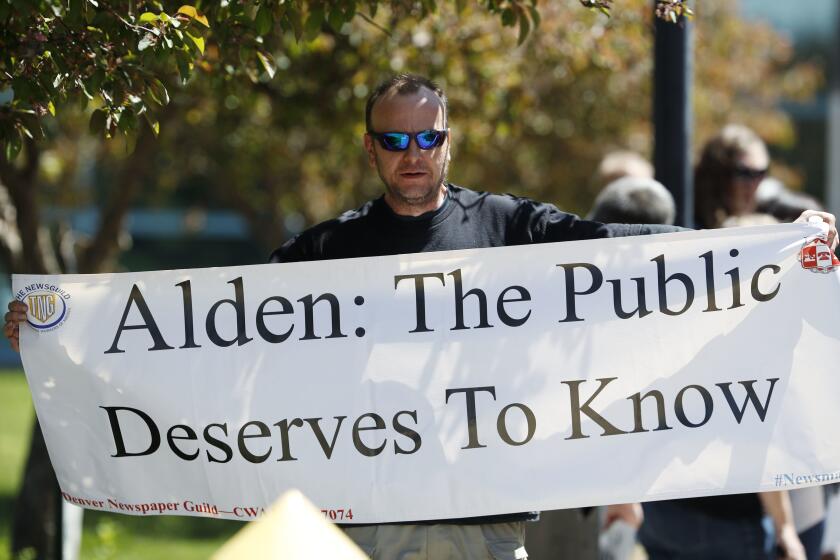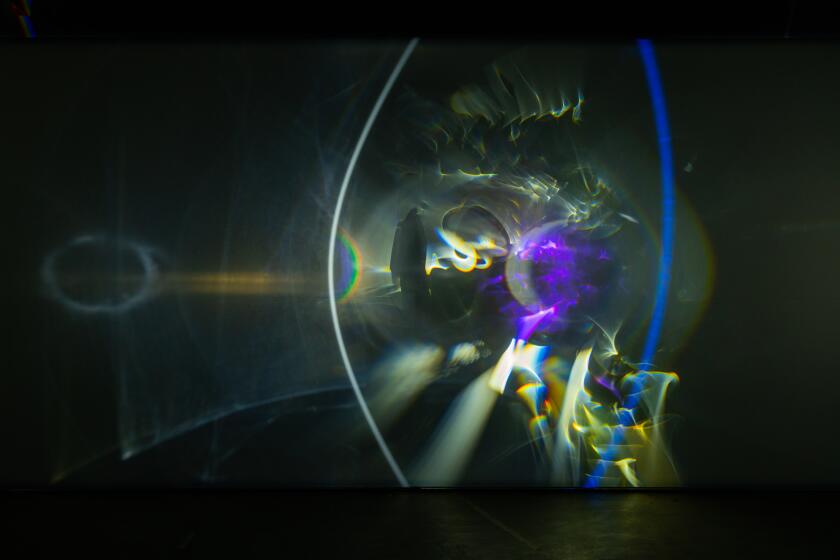No battle to get Smithsonian’s OK
Some of the artifacts that come to life in “Night at the Museum: Battle of the Smithsonian” are very familiar (Oscar the Grouch, the giant squid), while other landmarks and props (Rodin’s “The Thinker,” which technically resides in Paris and doesn’t speak with the voice of Hank Azaria) are entirely Hollywood fantasy.
And that’s all right with the Smithsonian, which has its name on the marquee -- and on a few large checks.
The Smithsonian’s deal with 20th Century Fox includes a licensing fee, location fees for four days of filming and payments if the film reaches certain benchmarks at the box office, according to museum officials. If the film makes as much as 2006’s “Night at the Museum,” the deal could add up to $1.25 million before any merchandising.
The sequel marks the first time a commercial studio has been allowed to film inside the National Air and Space Museum on the Mall or any of the Smithsonian’s museums.
The PG-rated action comedy stars Ben Stiller, Azaria, Amy Adams, Owen Wilson and Robin Williams and follows a former security guard trying to rescue his museum “friends” after a transfer from New York to Washington.
“Battle of the Smithsonian’s” journey to the Smithsonian began in September 2007, when Shawn Levy, director-producer of both “Museum” films, toured Air and Space and sat down with the communications staff to talk about the idea. In October 2007, the communications team read the script -- working title then: “Escape From the Smithsonian” -- signed a confidentiality agreement and sent a proposal to then-acting Smithsonian Secretary Cristian Samper.
The Smithsonian tested the idea with its congressional chairmen, the governing board of regents and several curators. Smithsonian leadership talked to officials at the National Archives, which received more visitors after its exterior was featured in the 2004 Nicolas Cage movie “National Treasure,” and also the American Museum of Natural History in New York, the setting for the first “Night at the Museum.”
The Smithsonian powers were aware of the first Stiller adventure’s success: The New York museum hosted 20% more visitors after the movie’s release. “We didn’t do any formal analysis, but we estimated 50,000 visitors came, prompted by seeing the movie,” said Steve Reichl, the senior director of media relations for the museum. The company was allowed to film the exterior of the museum; the interior work was re-created on a soundstage in Vancouver.
The first film took in $574.5 million worldwide and $250.9 million domestically. Seeing that as a valuable lesson in economics in the current dismal fundraising climate, the Smithsonian didn’t hang up when it got the call from the Fox operatives last year.
“We thought it was a good idea, even though there was some resistance,” said Gen. John R. “Jack” Dailey, the National Air and Space Museum’s director. “There was concern because this was the first time the Smithsonian was ever used in a movie. The name is our most important possession.”
Levy said the Smithsonian’s questions were understandable. “They wanted to see the script. They wanted us to treat the Smithsonian with respect. But they also wanted it done with wit and humor. They had an instinct not to want the treatment to be overly reverential.”
Both organizations say the negotiations were smooth.
“We are babes in the woods when it comes to negotiations in that environment. They treated us fairly, and it came out where we will all benefit,” Dailey said.
Levy, speaking from the set of his next project, the comedy “Date Night” starring Steve Carell and Tina Fey, said there were no unexpected demands. “No, it wasn’t like dealing with a movie star,” he said. When the crew filmed at the Smithsonian for four days last year, the museum was open during the daytime shootings. “Hundreds of tourists would stop and watch and they would clap when I said ‘cut.’ It was a ball,” Levy said.
In the agreement, the Smithsonian received $550,000 for the use of its name, and $200,000 for the four days of filming. After the movie’s release, the Smithsonian will receive flat payments when the movie reaches certain benchmarks at the box office. It will get $250,000 when the box-office take reaches $150 million; $125,000 when it reaches $200 million and $250 million, respectively, the Smithsonian confirmed. The Smithsonian is also earning 7.5% from the movie merchandise sold in its stores.
In addition, the studio has agreements with three well-known American corporations -- Post Cereals, Hershey and Kraft Foods -- for merchandise promotion and the use of the Smithsonian name. The companies are running a contest that includes “a night at the Smithsonian.”
The Smithsonian is also getting publicity from a video game and books tied to the movie.
Dailey missed the glitzy premiere last week but is hopeful visitors will separate the film antics from the real stuff in the museum.
“Well, the movie’s Wright Flyer is flying, and it never did much flying in real life,” Dailey says.
--
Trescott writes for the Washington Post
More to Read
The biggest entertainment stories
Get our big stories about Hollywood, film, television, music, arts, culture and more right in your inbox as soon as they publish.
You may occasionally receive promotional content from the Los Angeles Times.










